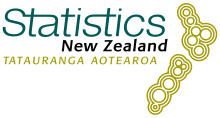Time Series Analysis
Graphics for time series aimed at seasonal series.
Includes time series plots with smoothed trends, plots displaying seasonal decomposition, forecasting using Holt-Winters, and plots for comparing a set of series.
Caters for constant additive or multiplicative seasonal effects.
Specifying the Time Structure
Users can supply time information to iNZight in one of two ways: either by specifying an appropriately formatted variable, or by manually telling iNZight about the structure.
Supported Time Variables
iNZight's Time Series module can currently only read specially formatted variables to determine the time structure of a data set, and supports observations made over periods of a year (daily, weekly, monthly, quarterly, yearly observations), daily observations made over weeks, and hourly data made over days.
The following table shows the formula for these time variables (code letters in parentheses {} are optional)
| Period | Frequency | Code | Examples | Notes |
|---|---|---|---|---|
| Yearly | Annual | {Y}yyyy | 1990, Y1990 | |
| Quarterly | {Y}yyyyQqq | 1990Q01, Y1992Q01 | qq can be 01-04 | |
| Monthly | {Y}yyyyMmm | 1990M01, Y1990M01 | mm can be 01-12 | |
| Weekly (7-days per week)* | {Y}yyyyWww | 1990W01, Y1990W02 | ww can be 01-52 | |
| Daily | {Y}yyyyDddd | 1990D01, 1990D127, Y1990D001 | dd can be 001-366 | |
| Weekly | Daily | WwwDdd | W01D01, W125D07 | dd can be 01-07 |
| Daily | Hourly | DddHhh | D01H01, D184H23 | hh can be 01-24 |
* if your data has a period of 5 days per week, then you'll need to specify the time manually (see below).
Manual Time Specification
If your data doesn't fit one of the above structures, or you don't want to manually create the variable, you can easily specify the structure of your time series data by choosing "Provide Time Information".
- Use the table above to determine what the period and frequency of your data should be, and then choose the appropriate options from the drop downs.
- You can specify you own ("custom") frequency if it is not one of the common ones listed above; for example, if you have daily data over a period of work weeks (Monday – Friday), set the frequency to 5.
Additional Documentation
We have very little documentation ourselves, however CensusAtSchool NZ has some resources related to time series.


